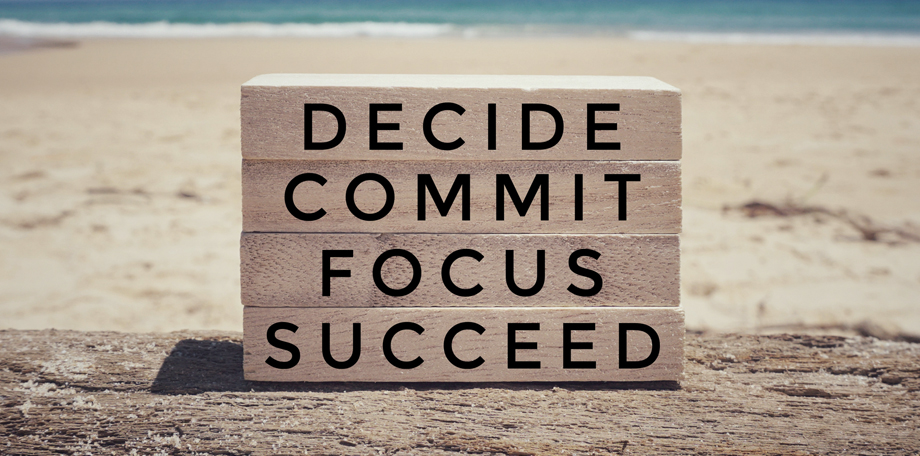“I thought I’d be earning six figures by now.”
“I belong to a great gym; why can’t I seem to get there?”
“I have a great idea for a book … but I know I’ll never have the time to write it.”
In one variation or another, frustration is a common theme I hear from executive and career coaching clients alike. If any of these sound familiar to you, what stands between your vision and your reality? The number one reason people aren’t where they want to be — in their career, relationships or life — is often a lack of clarity around their true priorities. Once you gain a strong understanding of your priorities, however, anything is possible.
Annie, a single mom, recently completed her master’s degree in Computer Science. It was no small task; in addition to caring for her six-year old son, Annie worked full-time as a technical support representative. People often asked how she did it. While there was no doubt in her mind that being a good parent was a top — if not the top — priority in her life, Annie recognized that she wasn’t going to be able to financially provide for her son over the long run given her current salary. More importantly, she wanted to be a positive role model for her son, proving that if you want something badly enough and put forth the effort, your vision can become your reality.
Even though there were days she skimped on sleep, rushed through reading her son a bedtime story and brought in fast food for dinner, earning her master’s degree was in alignment with her priorities — not only for herself, but also for her son. Annie remained cognizant of her priorities. And that’s how she did it.
RESISTING “NOISE”
Distraction comes in many forms. From competing commitments to information overload, it can often seem impossible to stay the course. Negative self-talk can be the nemesis of focus, confidence and, ultimately, achievement. Clearing the mental clutter is a lot like shoveling snow, paving a smooth path for you to get from here to there.
Develop an awareness of what pulls you off track. Are you a people pleaser, willing to drop your plans to attend a yoga class if your friend calls with a request to babysit? Do you tend to focus on the worst-case scenario, often sidetracked by thoughts of what could go wrong? Are you a procrastinator, easily distracted by the lure of something that sounds better in the moment? Are you self-sabatoging your efforts in other ways?
Once you identify your obstacles, you can develop strategies to overcome them. Remaining focused will allow you to stay true to your priorities — and to yourself.
A Personal STORY: HOW I BECAME A “PRE-CRASTINATOR”
One of the downsides of my own childhood is that I didn’t have much of a childhood. As a result, I learned a critical life lesson at a very early age. And that turned out to be a blessing, however disguised it was at the time. Because of my mother’s illness, I was thrust into the role of adult from the time I was in elementary school. While other kids in the neighborhood were busy outside playing basketball, I was tasked with vacuuming the living room, preparing simple dinners and folding laundry. Only after I had completed my chores and my homework could I join my friends. And I loved playing basketball.
Naturally, my responsibilities increased as I got older. Not only did I have to help (even more so) around the house, but I also had to juggle my increasingly difficult homework and, as a three-season athlete throughout high school, wake up early and stay after school for practices and games. As a result, I became very efficient. I learned to be extremely adept at finding — and using — time to my advantage. Whether that meant doing my homework during recess, or even my lunch period, I knew that the more quickly I finished what I needed to do, the sooner I could get to the things I wanted to do.
I opted to take the short-term pain for the long-term gain, a strategy I carried into my adulthood. When I was working on my master’s degree and Ph.D. at the University of Chicago, I always completed my assignments a week or two early. I planned not only a timetable for writing papers, studying for exams and applying to internship programs — but also for the “what-ifs.” What if I got sick? What if a family emergency cropped up? What if …? As a result, I never missed a deadline. In fact, deadlines didn’t stress me out. I knew that I was in control. Most people — often unwittingly — take the short-term pleasure and carry the long-term pain with them. They procrastinate.
Learning to pre-crastinate involves developing a keen sense of self-awareness. What are your true priorities? And how can you find — and use time — to your advantage accordingly?
LET’S BE REAL
Think about it. How important are the things you say are important to you? I once had an executive coaching client, “Brad,” who was frustrated by his lack of spirituality. He was convinced that it was crucial to becoming a better parent, partner and leader. For 15 months, Brad and I talked about ways for him to cultivate his spirituality — through books, organized religion, meditation and even simply spending time in nature. Becoming spiritual came up in every quarterly review of our progress, and in every aspect of his life.
Still, Brad never found — or made — the time for it. And so, I suggested that he take it off the table. I went a step further, telling him he couldn’t put it back on the list for consideration for six months. After six months, did Brad become spiritual? No. Developing spirituality sounded good, and Brad believed it was something he should be working on. But he lacked an authentic desire. There wasn’t a true yearning. It wasn’t really a priority.
5 QUESTIONS TO ASK YOURSELF: WHY AM I NOT WHERE I WANT TO BE?
1. Who do I want to be?
2. What are my true priorities?
3. When am I most vulnerable to external “noise”?
4. Where can I exert more control than I realize?
5. Why not start today?
GETTING THERE — INTENTIONALLY
Either you run the day, or the day runs you.” – Jim Rohn
One way to ensure that you control the reins over your day — and, in turn, your life — is to set intentions. When you set an intention, you bring desire to a conscious level, where it transforms into a decision. It’s then up to you to act in alignment with that decision. Annie, the single mom who earned her master’s degree while working full time, was able to clearly identify her priorities. She also maximized her capacity. The path to Annie’s success was paved with intention. What intentions will pave yours?
Tactical strategies fall short. Our workshops dig below the surface to help you explore the ways you might be standing in your own way.
Other Posts You Should Read:
5 Ways to Clear Your Mental Clutter
Life Coach Insights: How to Break the People Pleasing Habit




